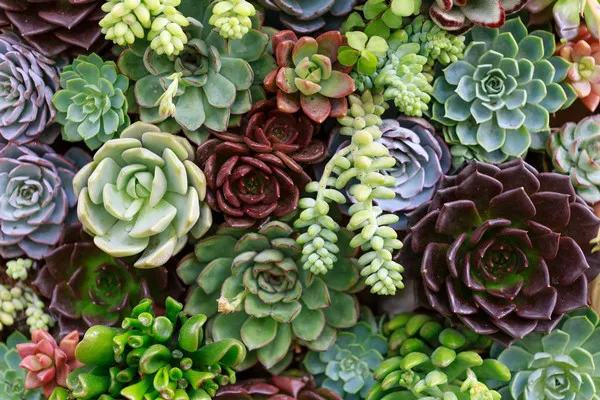Succulents are beloved for their unique appearance, ease of care, and ability to thrive in arid conditions. However, despite their reputation for being low-maintenance, overwatering is one of the most common mistakes succulent enthusiasts make, often resulting in detrimental consequences for these charming plants. By paying close attention to your succulent and taking the necessary steps, you can help your plant recover and continue to flourish.
Understanding Succulent Watering
Before we delve into the signs of overwatering, it’s crucial to understand the fundamental principles of succulent watering. Succulents have evolved to store water in their leaves and stems, making them well-suited to dry and arid environments. They thrive in well-draining soil and require infrequent but deep watering to mimic the natural cycle of rainfall in their native habitats.
The Importance of Proper Drainage
One of the key factors in succulent care is providing proper drainage. Succulents are highly susceptible to overwatering because they are adapted to environments where water quickly drains away. Without adequate drainage, excess water can accumulate in the soil, leading to root rot and other problems. Ensuring your succulent’s pot has drainage holes is the first step in preventing overwatering.
Signs of Overwatering: The Basics
Overwatering occurs when a succulent receives more water than it can effectively use or when the soil remains consistently moist. These conditions can lead to root rot and other issues, which is why it’s essential to recognize the signs of overwatering early. Here are some of the primary indicators to watch for:
Succulent Leaves: A Key Indicator
The condition of your succulent’s leaves is a critical indicator of overwatering. When succulents are overwatered, their leaves often become waterlogged and mushy. They may appear swollen or translucent, and in severe cases, they may start to yellow or drop off.
Color Changes in Leaves
Another visual cue of overwatering is a change in leaf color. Healthy succulent leaves are typically firm and vibrant in color. Overwatered succulents, on the other hand, may exhibit pale or translucent leaves, often with a limp, wilted appearance. These changes in leaf color are a clear sign that something is amiss with your succulent’s water balance.
Leaf Drop and Shrinkage
Excessive moisture in the soil can cause succulent leaves to become heavy and prone to drooping. If you notice your succulent’s lower leaves are dropping or that the overall appearance of the plant seems less full, it’s likely a consequence of overwatering. Additionally, the leaves may appear wrinkled or shriveled.
Soil Moisture
The moisture level of the soil is a crucial factor in determining if your succulent has been overwatered. Using a moisture meter or simply sticking your finger into the soil about an inch deep can help you assess the soil’s dampness. If the soil feels consistently wet or damp, it’s a strong indicator of overwatering.
Pot and Soil Inspection
The type of pot and the soil used for your succulent can play a significant role in its susceptibility to overwatering. Non-draining pots or soil that retains moisture can exacerbate the problem. If your pot lacks drainage holes or the soil remains moist for extended periods, these factors may contribute to overwatering issues.
Root Health
A more advanced technique for assessing overwatering is to inspect the root system. Carefully remove the succulent from its pot and examine the roots. Healthy succulent roots are plump, white, and firm. Overwatered succulents may display mushy, discolored, or rotting roots.
Fungus and Mold
Overwatering creates the perfect environment for fungal growth and mold. If you observe any unusual growth or discoloration on the surface of the soil, it could be a sign of overwatering. Fungus gnats, small insects that thrive in overly moist conditions, are also indicators of excessive watering.
Odor
An unusual odor emanating from the soil is another sign of overwatering. Overwatered succulents may develop a musty or rotten smell, which indicates that root rot or fungal issues have set in.
Remedy for Overwatering
If you suspect your succulent has been overwatered, taking immediate action is crucial to prevent further damage. Here are steps you can follow to help your succulent recover:
Remove the succulent from the pot and inspect the roots for signs of rot. Trim away any damaged or rotted roots with clean, sharp scissors or pruning shears.
Allow the succulent to dry and callous for a day or two. This step is crucial in preventing further damage during the repotting process.
Repot the succulent in a well-draining soil mixture and ensure the pot has proper drainage holes.
Adjust your watering routine to ensure you are only watering when the soil is dry to the touch about an inch deep.
Place the succulent in a location with bright, indirect sunlight, allowing it to recover and reestablish its root system.
Prevention is Key
Preventing overwatering is always better than dealing with the consequences. Understanding your succulent’s specific water needs, providing proper drainage, and using well-draining soil can go a long way in avoiding overwatering issues. Regularly monitoring your succulent’s health and adjusting your care routine accordingly will help maintain its vibrancy and vitality.
Conclusion
Overwatering is a common issue that succulent enthusiasts face, but with the right knowledge and proactive measures, it can be managed and even prevented. By recognizing the signs of overwatering, taking immediate action to remedy the situation, and adjusting your care routine, you can help your succulent recover and thrive once more. Remember that succulents are resilient plants, and with your attentiveness and proper care, they will continue to bring beauty and joy to your space for years to come.


